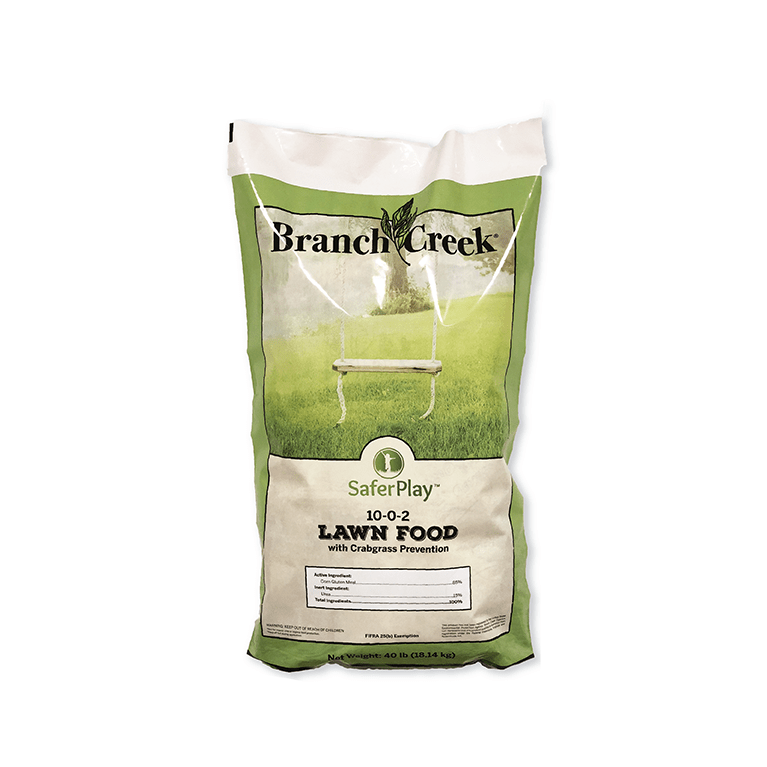Weed Prevention | with Lawn Food
Scoop Up Our Game-Changing Fertilizer with Weed Prevention.
Weed Prevention with Lawn Food is a non-manure based, biosolid-free fertilizer that contains no harsh ingredients. With an effective formula and no restrictions on reentry time after application, Weed Prevention with Lawn Food is revolutionizing the way turf managers fertilize and control cool and warm season grasses.

Weed Prevention with Lawn Food boasts significant benefits including:
- Plant-based – Unlike manure-based, poultry-based or biosolid fertilizers, it’s made from plant proteins.
- Odor-free
- No biosolids
- No harsh ingredients
- No synthetic phosphorus – Complies with state and regional restrictions in areas where phosphorus use is banned.
- Promotes lush, green turf
- Can be applied during seeding – Will not negatively impact seed germination.
- Competitively priced – Weed Prevention with Lawn Food is not only cost-effective – it is a non-commodity product; therefore, the price doesn’t fluctuate.
- Convenient – With no harsh ingredients, there are no restrictions on reentry time after application.
Weed Prevention with Lawn Food Offers a Safer, Sought-After Alternative
Widespread awareness is prompting a growing number of parents, schools, municipalities and other organizations to seek fertilizers free of harsh ingredients. Weed Prevention with Lawn Food meets this increasing demand for effective alternatives, providing turf managers with a proven product that delivers winning results.
- Sustainable – Rather than letting food waste wind up in landfills, we refine it and blend it into effective soil treatments.
- Patented Plant Protein Technology – Weed Prevention with Lawn Food is derived from corn processing food waste blended with processed corn gluten meal and boasts our patented plant protein technology.
- Safer – Contains corn gluten meal and food grade urea
| EPA REG NO. | FIFRA 25(b) Exempt |
| Active Ingredient | Corn Gluten Meal 85% |
| Formulation | Granular |
| Package Size | 40 lb Bags (50 Bags per Pallet) |
Spreader Settings:
Weed Prevention with Lawn Food
| 1/2 lb. N | 1 lb. N | |
| Scotts® R8 | O/P | V |
| Scotts® 2000 | Q/R | X |
| Lesco® | L/M | P/Q |
| Earthway | ? | ? |
| Vicon® | 33 – 25′ | 46 – 25′ |
| Lely® | 5 – 25′ | 7.75 – 25′ |
*Scotts is a registered trademark of The Scott Company.
*Lesco is a registered trademark of Lesco Technologies, LLC.
*Earthway is a registered trademark of Earthway Products, Inc.
*Vicon – Kveneland Group NIEVW VENNEP B.V.
*Lely – C. Van Der Lely N.V.
Application Programs
Cool Season (Northern) Grasses
Fertilize northern grasses, such as Kentucky Bluegrass, Fescue and Perennial Ryegrass, with just 2-3 applications annually.
Instructions:
Apply 2 weeks prior to crabgrass germination. Second reinforcement application should be made 5-6 weeks after initial treatment. For best results, apply this product within a few days after mowing and avoid moving for a few days after application. Irrigation or significant rainfall within a couple days of application will improve outcomes. An additional fall application is recommended during over seeding to provide added control and increased success when coming out of dormancy in the spring.
Rates and Timing:
Mid-March to April (or after turf breaks dormancy)
3-5 lb. per 1,000 sq. ft.
Use 5 lb. rate on high pressure crabgrass sites
September (over seeding)
Warm Season (Southern) Grasses
Fertilize southern grasses, such as Bermuda, St. Augustine, Centipedegrass. Bahia and Zoysia, 3 times per year.
Instructions:
Apply 2 weeks prior to crabgrass germination. Second reinforcement application should be made 5-6 weeks after initial treatment. For best results, apply this product within a few days after mowing and avoid moving for a few days after application. Irrigation or significant rainfall within a couple days of application will improve outcomes. An additional fall application is recommended during over seeding to provide added control and increased success when coming out of dormancy in the spring.
Rates and Timing:
Mid-March to April (or after turf breaks dormancy)
3-5 lb. per 1,000 sq. ft.
Early October (over seeding)
Resources
State Registration
Minnesota
Massachusetts
North Carolina
Florida
Wisconsin
New York
Virginia
Delaware
Colorado
Connecticut
New Hampshire
New Jersey
Pennsylvania
Texas
Maryland